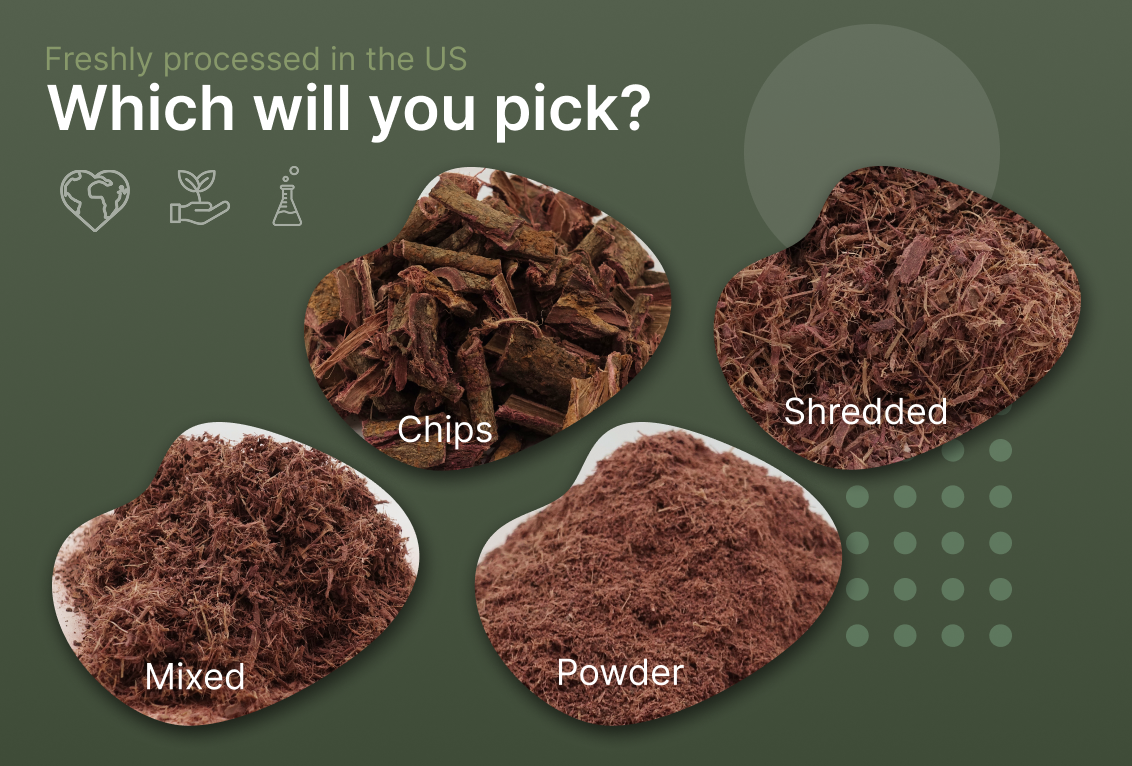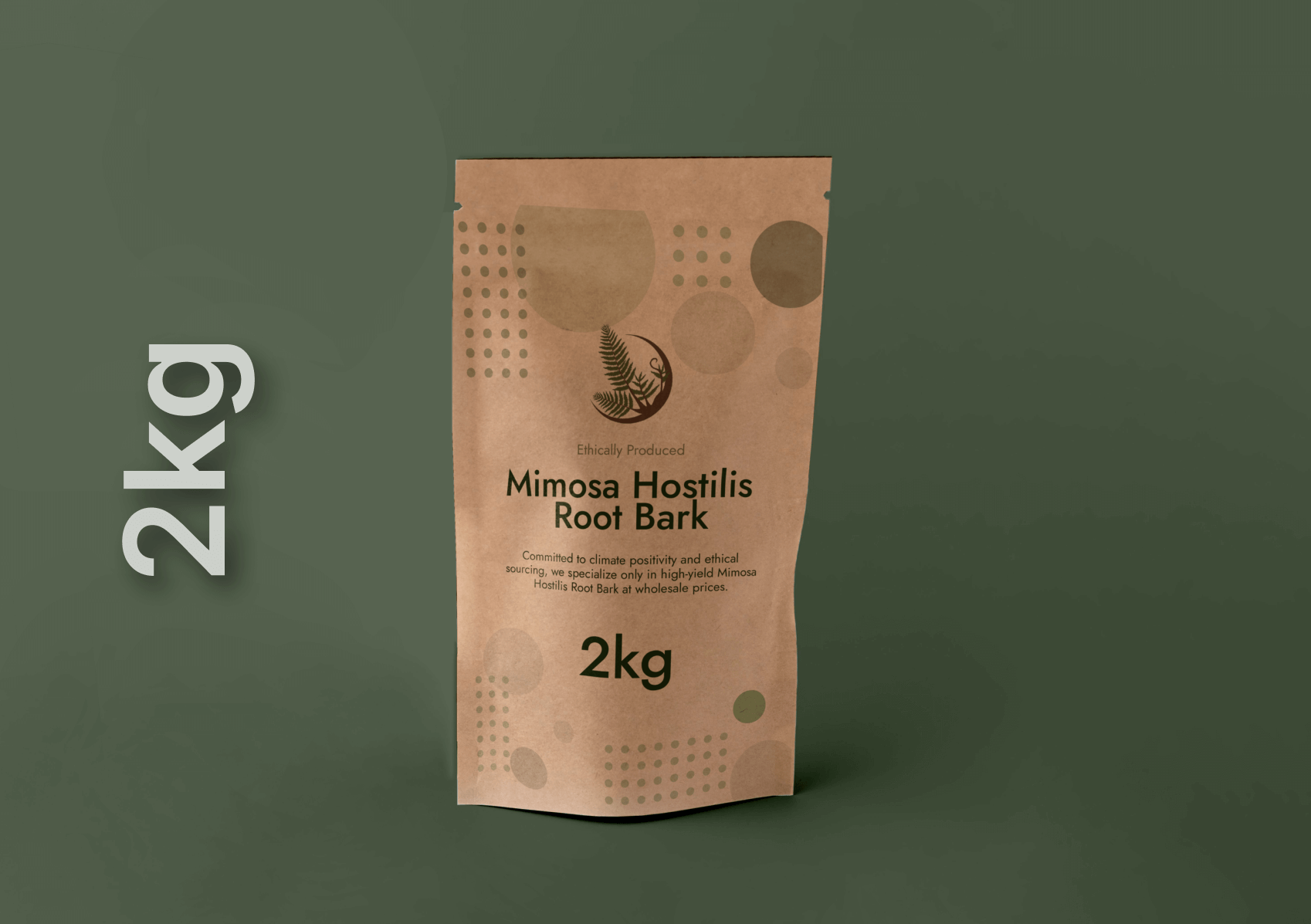To cultivate Mimosa hostilis successfully involves a crystal-clear understanding of its natural habitat, soil, climatic requirements, and ongoing care. By aligning your cultivation timeline with the jurema preta tree’s natural requirements, you’ll be well on your way to developing a strong, healthy specimen that flowers and yields sustainable returns.
Native Habitat & Climate Requirements
Mimosa tenuiflora is native to Brazil, Mexico, and other Central American tropical and subtropical regions, grows in hot, semi-arid climates. Understanding these will inform your location choice:
- Average Temperature: Give daily temperatures of 75°F to 95°F (24°C–35°C) highs and nighttime temperatures no lower than 50°F (10°C).
- Frost Sensitivity: Extremely frost-sensitive; even slight freezes (32°F/0°C) will damage foliage and woody stems.
- Rainfall Patterns: It has a pronounced dry season, with slight rains, and a wet season with modest rains in its natural habitat. Simulating this pattern induces strong root growth and periodic growth spurts.
By simulating its native micro climate, you provide the conditions for robust growth and tolerance to environmental stresses.
- Also read this expert guide on mimosa hostilis cultivation and harvesting
Soil Drainage & Composition Requirements
Soil quality is crucial. Mimosa hostilis also known as tepezcohuite needs well-draining medium to prevent root rot and anaerobic soil conditions:
1. Soil Texture: 60% sandy loam mixed with 40% organic compost allows for drainage and nutrient retention.
2. pH Range: Slightly acidic to neutral pH between 6.0 and 7.5. Use pH meters or soil test kits every three months to test and balance as necessary.
3. Drainage Solutions
- Plant on mounds or raised beds.
- Blend in perlite or horticultural sand at 10% volume to enhance permeability.
- Avoid clay soils, which compact and hold too much water.
Good drainage is one of the most significant single factors for healthy root structure and long-term survival.
Light & Temperature Control
Light and temperature are interconnected:
- Full Sun Requirement: Position the plants in a spot receiving at least 6–8 hours direct sun per day. Partial shade will hinder growth and vigor.
- Heat Tolerance: The plant tolerates extreme sunshine and heat of tropical environments with high tolerance.
- Temperature Fluctuations: Day-to-night fluctuation is to be expected, but don’t expose plants to abrupt below 50°F (10°C) dips. Greenhouse growing or seasonal blankets in temperate regions are advisable.
By maximizing light exposure and even warmth, you maximize the rate of photosynthesis and biomass accumulation.
Watering & Humidity Strategies
Effective water management balances the tree’s drought tolerance with its need for even moisture during growing seasons:
1. Irrigation Schedule:
- Mature Trees: Occasional deep watering allows the top 2–3 inches of soil to dry before watering it again.
- Young Seedlings: Maintain even moisture; frequent shallow watering promotes root development.
2. Don’t Over-water: Waterlogged soil promotes fungal issues. Use drip irrigation or soaker hoses for targeted delivery.
3. Humidity Levels: While the tree tolerates low humidity, keep relative humidity at 40–60% to improve leaf turgidity and reduce transpiration stress.
Water steadily but in a controlled fashion to encourage vigorous growth without encouraging root disease.
Read this article on Exploring the Global Market for Mimosa Hostilis Products
Nutrient Requirements & Fertilizer Schedule
M hostilis enjoys thoughtful nutrient supplementation to enhance its rapid growth:
1. Macro-nutrients
- Nitrogen (N): Encourages lush foliage growth; apply balanced NPK fertilizers (e.g., 10-10-10) during periods of active growth.
- Phosphorus (P): Encourages root development and flowering; follow with transplant supplement.
- Potassium (K): Enhances disease resistance and overall vigor by including in monthly feedings.
2. Micro-nutrients: Magnesium, iron, and zinc correct chlorosis and structural deficiencies. Use a complete micro-nutrient solution every other month.
3. Application Method:
- Base application of granular slow-release fertilizers with light incorporation.
- Liquid foliar feeds mid-season for quick deficiency correction.
A well-balanced fertilization program gets your trees to display the optimum leaf color, stem vigor, and root development.
Propagation & Planting Techniques
Propagation may be by seeds or stem cuttings:
Seed Propagation
- Seed Preparation: Scarify seeds by nicking the seed coat or soaking in warm water for 12–24 hours to enhance germination.
- Sowing Depth: Sow seeds at 0.5 inch (1.3 cm) depth in sterile seed-starting mix.
- Germination Conditions: Provide temperatures of 75°F–85°F (24°C–29°C). Seeds will generally germinate in 7–14 days.
Propagation using Cuttings
- Cutting Selection: Collect semi-hardwood cuttings (~6–8 inches/15–20 cm) with at least two nodes.
- Rooting Medium: Plant in a peat moss and perlite mixture (1:1).
- Hormone Treatment: Dip cut ends in auxin-type root hormone to speed up root initiation.
- Maintenance: High humidity (plastic dome cover) and bright indirect light. Roots form in 3–6 weeks.
Selecting the proper propagation method meets your budget and timetable, whether you need rapid doubling (cuttings) or genetic diversity (seeds).
Pest & Disease Control
Normally a robust plant, Mimosa hostilis is prone to pests and fungal infections:
1. Pests: Aphids, spider mites, and scale insects drain energy. Inspect leaves regularly and treat with insecticidal soaps or neem oil at the onset of infestation.
2. Fungal Problems: Powdery mildew and root rot are caused by excessive moisture and poor air circulation. Ensure:
- Good plant spacing.
- Removal of dead or infected tissue promptly.
- Copper fungicides used in the case of outbreaks.
IPM practices and early warning systems keep your orchard productive and healthy.
Pruning & Seasonal Care
Pruning and seasonal care optimize structure and air flow:
- Pruning Schedule: Prune lightly in late winter or early spring before new growth.
- Objective: Eliminate crossing branches, deadwood, and water sprouts to channel energy into desirable scaffold limbs.
- Training Young Trees: Stake seedlings to encourage vertical growth and minimize wind damage.
Routine structural pruning improves not just canopy structure, but also light penetration and harvest efficiency.
Field vs. Container Culture
Your decision to use container or in-ground culture depends on your availability of space, climate, and mobility needs:
Containers:
- Use large containers (15+ gallons) with high-quality potting mix.
- Create drainage holes and a well-draining potting medium.
- Advantages: Flexibility for frost protection; ideal for small-scale or ornamental production.
Field Plots:
- Use sloping ground or raised beds for proper drainage.
- Suitable for large-scale commercial or perennial plantations.
- Needs site preparation and soil analysis.
Both must follow the key growth conditions mentioned above, but containers allow for greater versatility under extreme climates.
Harvesting & Sustainable Practices
Sustainable harvesting enables long-term productivity:
- Harvest Timing: Harvest trees that are 3–5 years or more mature for bark or root bark harvests so as not to deplete juveniles.
- Selective Harvesting: Harvest patches of mimosa hostilis root bark in alternating sections to allow the tissues to regenerate.
- Regrowth Monitoring: Fertilize with a well-balanced fertilizer after harvesting and monitor for regrowth within the next 12 months.
With the inclusion of ethical harvesting practices, you keep your plantation healthy and supply ongoing without causing environmental degradation.
Conclusion
Cultivating Mimosa hostilis requires meticulous attention to climate, soil, light, water, and nutrient parameters. By following this comprehensive guide, you’ll be well-equipped to establish and maintain a robust, high-yielding plantation—whether in a commercial setting or a home garden.
FAQ’s
1. What type of climate does Mimosa hostilis need to grow?
Mimosa hostilis thrives in warm, tropical to subtropical climates. It prefers temperatures between 20–30°C (68–86°F) and does not tolerate frost.
2. What kind of soil is best for Mimosa hostilis?
It grows best in well-draining sandy or loamy soil with a slightly acidic to neutral pH (around 5.5–7.5). Poorly drained or clay-heavy soils can cause root rot.
3. How much sunlight does Mimosa hostilis require?
This plant needs full sun exposure for healthy growth. At least 6–8 hours of direct sunlight daily helps it thrive and develop strong roots and foliage.
4. Does Mimosa hostilis need a lot of water?
It is drought-tolerant once established, but young plants require regular but moderate watering. Overwatering should be avoided as it can damage the roots.
5. Can Mimosa hostilis be grown in pots or containers?
Yes, it can be grown in large pots or containers with good drainage. However, as a fast-growing tree, it may eventually need to be transplanted outdoors to reach its full potential.




